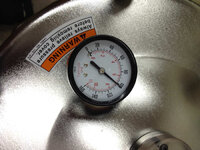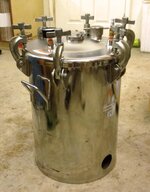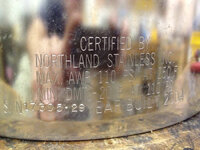MesquiteMan
Retired Head Moderator
Well, I got one of the new pressure pots from the scarp yard all up and working tonight! I am FINALLY able to cast at 100 psi SAFELY!


And before anyone jumps my butt about the pressure I am running this at , notice the certification stamp. 110 psi Actual Working Pressure (AWP) (I believe that is what AWP stand for in this case. Please correct me if I am wrong!)
, notice the certification stamp. 110 psi Actual Working Pressure (AWP) (I believe that is what AWP stand for in this case. Please correct me if I am wrong!)

And before anyone jumps my butt about the pressure I am running this at
Attachments
Last edited:



